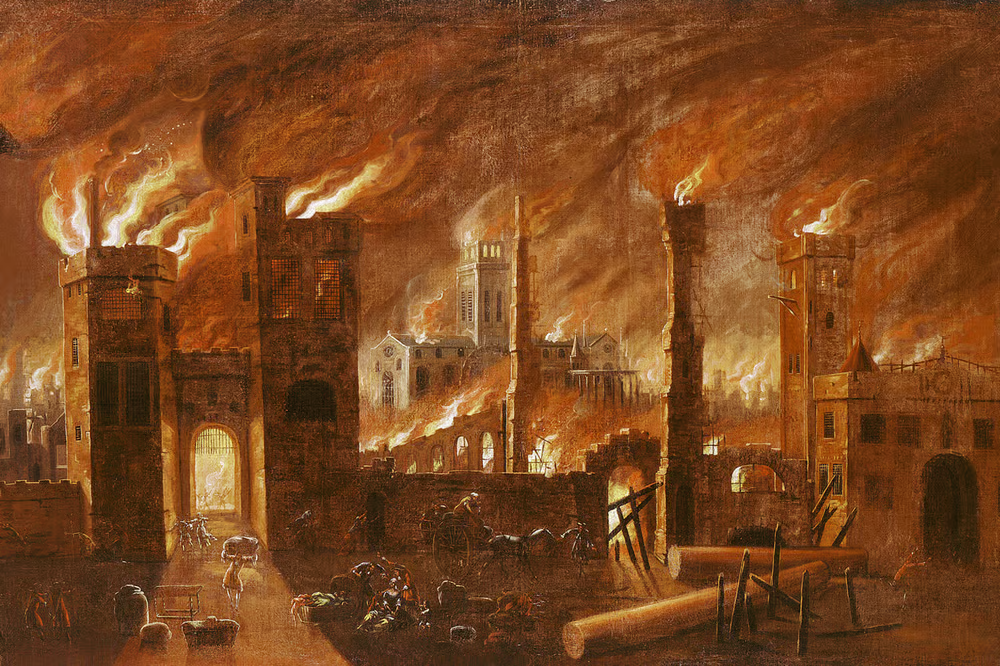In early September 1666, a seemingly ordinary early‐morning spark in a bakery on Pudding Lane ignited what would become the Great Fire of London. Over four days, the blaze consumed approximately 13,000 houses, 87 parish churches—including the iconic St Paul’s Cathedral—and large portions of the medieval City of London. The scale and speed of the disaster exposed fatal vulnerabilities: densely packed timber structures, narrow winding streets, strong easterly winds—and an absence of organised firefighting
But the Great Fire also became a powerful inflection point. It propelled reformers and architects into action, notably the visionary Sir Christopher Wren, who played a major role in redesigning the city’s skyline and rebuilding St Paul’s. New building regulations emerged—mandating brick or stone instead of timber, wider streets, and structured firebreaks—laying the groundwork for modern urban-planning practices. Furthermore, the fire underscored the need for institutional responses: in 1667 Parliament passed the Fire of London Disputes Act to resolve property claims and support reconstruction efforts.
Today, the legacy of the Great Fire of London transcends its immediate destruction. It demonstrates how disaster can catalyse profound change—transforming not just a city’s architecture, but its regulatory systems, public-safety culture and identity. For students of history and urban planning alike, this event embodies the principles of E-E-A-T: it draws on the direct experience of 17th-century Londoners, demonstrates expertise in architectural and regulatory innovation, reflects authoritativeness in legislative reform and urban resilience, and retains trustworthiness as a documented turning point in city-building. By studying this fire, we learn that the greatest cities are often forged in the ash of their greatest trials.







